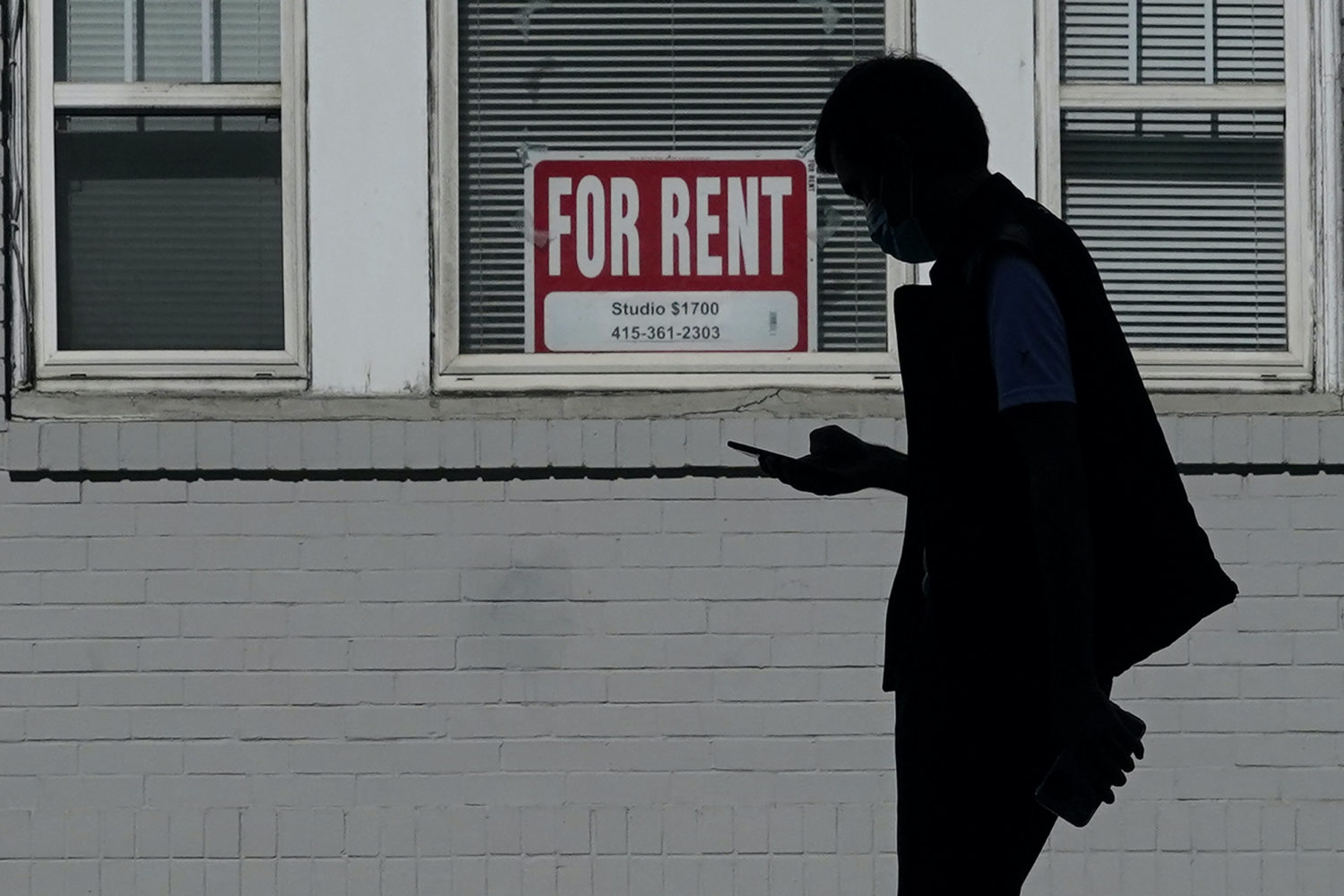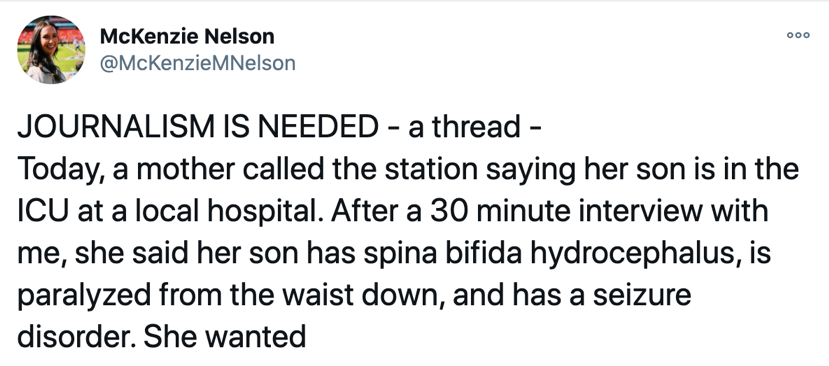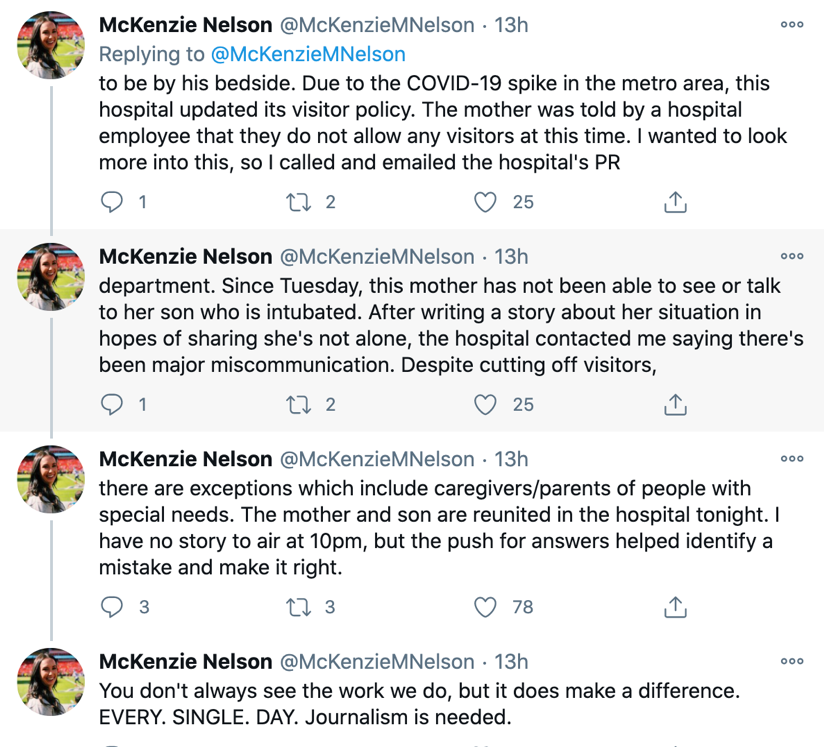 Covering COVID-19 is a daily Poynter briefing of story ideas about the coronavirus and other timely topics for journalists, written by senior faculty Al Tompkins. Sign up here to have it delivered to your inbox every weekday morning.
Covering COVID-19 is a daily Poynter briefing of story ideas about the coronavirus and other timely topics for journalists, written by senior faculty Al Tompkins. Sign up here to have it delivered to your inbox every weekday morning.
The newest data from Moody’s Analytics shows about 12 million renters are now at least $5,850 behind in rent and utilities payments — and eviction protections expire in weeks.
There’s been as much as a 70% increase from last year in people paying rent on a credit card, according to an analysis by the Federal Reserve Bank of Philadelphia.
“If you’re putting your rent payments on to a credit card, that shows you’re really at risk of eviction,” says Shamus Roller, executive director of the nonprofit National Housing Law Project. “That means you’ve run out of savings; you’ve probably run out of calls to family members to get them to loan you money.”
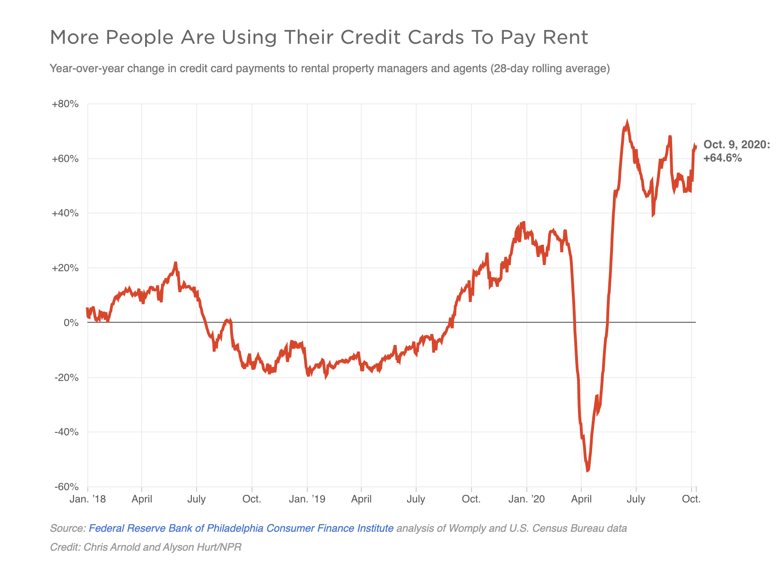
(NPR)
Here is the latest data that you can track to the state level (the tabs for state tables are at the bottom of the page):
- Last Month’s Payment Status for Owner Occupied Housing Units
- Last Month’s Payment Status for Renter Occupied Housing Units
- Confidence in Ability to Make Next Month’s Payment for Owner Occupied Housing Units
- Confidence in Ability to Make Next Month’s Payment for Renter Occupied Housing Units
- Likelihood of Having to Leave this House in Next Two Months Due to Foreclosure
- Likelihood of Having to Leave this House in Next Two Months Due to Eviction
- Food Sufficiency for Households, in the Last 7 Days
- Food Sufficiency for Households with Children, in the Last 7 Days
States have set differing vaccine priorities
Each state will have modestly different priorities, so dig in and learn your specific state’s plan and publicize it. In Kansas, for example, KSHB reports:
Gov. Laura Kelly says Kansas considers meatpacking plant workers and grocery store employees essential workers, putting them just behind health care workers and nursing home residents for coronavirus vaccines.
The Democratic governor also said Friday that members of the Republican-controlled Legislature won’t get any special treatment.
In California, CalMatters reports:
The coveted first batch is reserved for health care workers directly caring for COVID-19 patients in hospitals, including psychiatric and prison hospitals, residents and staff in long-term care facilities, paramedics and other emergency medical responders, and workers in dialysis centers, according to priorities set by state and federal health officials.
The Texas Tribune says teachers are trying to persuade the governor to move educators up the priority list.
[the_ad id=”667826″]
Covering Vaccines: a free webinar for journalists next week
Journalists, I have finished lining up our experts for the webinar I will lead on Monday, Dec. 14.
In addition to the heads of the American Medical Association and the National Medical Association, and a leading vaccine expert who has, himself, led the development of a vaccine, I just added Patricia A. Stinchfield, a pediatric nurse practitioner and president of the National Foundation for Infectious Diseases. Stinchfield has been a voting member of ACIP, which is a Centers for Disease Control and Prevention committee that, last week, approved the recommendations about who should be the first to get the COVID-19 vaccines.
We will focus as closely as we can on local stories around logistics, safety, priorities and even how these first-ever mRNA vaccines are different from vaccines you have gotten in the past.
Depending on how quickly the U.S. Food and Drug Administration acts on Pfizer’s request for approval (more on that below), the first vaccines may be administered as soon as the day of our webinar or the day after. Either way, this will be a red-hot topic and I am glad we can connect you with fantastic sources.
Go here and register. You will be free to record the session for your news coverage if you want to.
Why is the vaccine approval taking longer than hoped and expected?
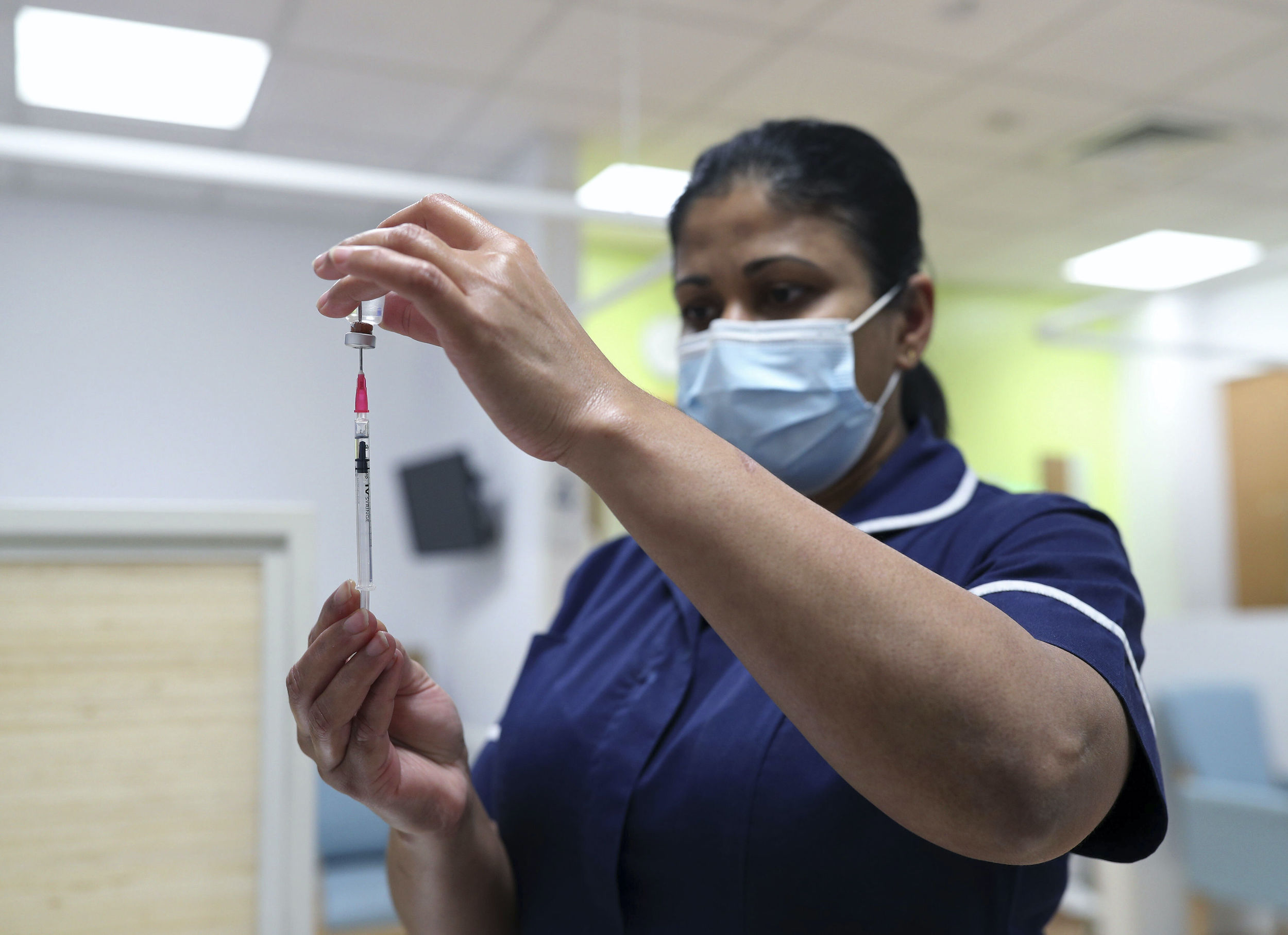
Nurses at the Royal Free Hospital, London, simulate the administration of the Pfizer vaccine to support staff training ahead of its rollout in the United Kingdom. (Yui Mok/PA Wire)
On Thursday, a board of advisers to the FDA will review detailed information from Pfizer about the company’s proposed coronavirus vaccine. There is no reason to believe the FDA won’t approve the vaccine, but there is no promise about how quickly it might happen.
StatNews raises the issue of why the approval process in the United States has moved more slowly than in the United Kingdom. It found the FDA committee members who will meet this week think that the main problem is not that it is moving too slowly — but that it might be acting too fast:
“It takes a few months usually to review these kinds of data, and now this has been shortened to a few weeks,” said Hana El Sahly, a researcher at the Baylor College of Medicine who normally chairs the FDA’s vaccine advisory committee, but who is recused this time because of her involvement with a vaccine developed by Moderna, expected to be before the panel on Dec. 17. “I just can’t see this amount of work being compressed significantly much more than it’s already been compressed.”
Cody Meissner, a Tufts Children’s Hospital vaccinologist who serves on the committee, said his concern is that “the process is too fast, not that it’s not fast enough.”
“I understand completely why people want a vaccine sooner, but they wouldn’t want a vaccine sooner if it wasn’t safe,” he said.
A STAT review of the process of vaccine development reveals only three ways it could have been further sped up. The first, and biggest, revolves around an FDA decision to require two months of safety data for half the patients in a study before a company asked for authorization. Had it settled for less data, a vaccine likely would have been authorized quicker.
The FDA might have also been able to save some time if it evaluated data on the vaccines on a rolling basis, instead of getting all of the information — in Pfizer’s case, tens of thousands of pages — at once. (Regulators in the U.K. accepted Pfizer’s data on a rolling basis, but the FDA argues that the processes were simply very different.)
Lastly — and perhaps least consequently — the FDA could have turned around the data for its advisory committee more rapidly, holding the meetings on, say, Dec. 3 and Dec. 10, instead of Dec. 10 and Dec. 17.
Emergency responders are at a ‘breaking point’ because of COVID-19

Emergency medical technicians and first responders amidst the coronavirus pandemic in New York City. (John Nacion/STAR MAX/IPx)
The American Ambulance Association told the U.S. Department of Health and Human Services that “the 911 emergency medical system throughout the United States is at a breaking point.”
NBC News reports, “Private EMS services, both in urban and rural centers across the country, collectively received $350 million in Covid-19 relief funds in April, but those companies said that money ran out within weeks. Months later, the need remains great as they face another coronavirus surge.”
NBC continues:
An HHS spokesperson said the agency has delivered nearly $107 billion to more than 550,000 providers across the country and opened a third round of funding of $20 billion last month, which they said is available to ambulance services.
That third phase of funding, however, comes with a limit. It’s available to every health care provider and supplier up to 2 percent of their 2019 revenue. EMS services said they’re thankful for the money, but it won’t keep them from potentially going under.
Response times are getting slower partly because it takes more time for emergency workers to put on their protective gear before they can touch a patient.
By the way, the phrase “breaking point” showed up pretty often in headlines over the weekend. I am not sure what “breaking” will look like in a pandemic when deaths and infections grow daily.
[the_ad id=”667872″]
Firefighters push to be included as a top priority for vaccination
The CDC classified emergency medical services workers as health care providers and part of the first group of people who should get the first COVID-19 vaccines. But the CDC did not include firefighters in that top group and the International Association of Fire Chiefs is pushing governors to change that. Other groups, including the International Association of Fire Fighters, National Association of State Fire Marshals, and the National Volunteer Fire Council signed on to the effort.
Other firefighters say they won’t take the vaccine
While some firefighters want to get toward the front of the vaccine line, the New York Post reports, “More than half of New York City firefighters say they won’t be vaccinated for COVID-19,” according to a new internal survey. The Post says, “The FDNY announced last week it would not make the vaccine mandatory for its members, a policy expected to be followed by all city agencies and even hospitals.”
This raises the question of whether your communities and towns will make vaccines mandatory for first responders, teachers and health care workers.
Are your local departments seeing fewer 911 calls?
I am seeing this story popping up around the country, but I can’t say yet if it is a trend. People in Bridgeville, Pennsylvania, for example, are calling 911 less often during the pandemic. The town’s website says:
Fewer people have been dialing 911 for medical emergencies like strokes and heart attacks, possibly due to a fear of contracting the novel coronavirus at a hospital.
As the demand for emergency medical assistance plummeted earlier this year, the nonprofit organizations that provide ambulance services have found themselves on financial life support.
A Harris Poll done for the American Heart Association predicted this behavior earlier this year. The poll found that about half of white Americans and more Black and Hispanic Americans said they would be reluctant to call for an ambulance — even if they were suffering a stroke or heart attack — because, they said, they didn’t want to wind up in a hospital and be exposed to the coronavirus.
And NBC News explains another reimbursement change that is hurting ambulance services, especially private companies:
Revenue has collapsed even further because ambulance services are also now expected to treat people in place at the scene of an emergency. It’s the new standard of care during the pandemic, but the Centers for Medicare and Medicaid Services refuses to reimburse companies for this method of treatment if the patient isn’t technically transported.
That’s a huge financial hit to ambulance companies that answer 911 calls across the country, especially because if Medicare doesn’t cover it, most insurance companies won’t either.
Volunteer fire and emergency units are in peril
The Salisbury (Maryland) Daily Times reports:
Volunteer fire departments rely on fundraising in order to operate. During most years departments don’t have trouble raising money, but in the midst of a pandemic, many volunteer fire companies now find themselves on the brink of closure.
COVID-19 has sparked an “emergency level” financial crisis in America’s volunteer fire service because the pandemic has put a halt to nearly all fundraising. Experts worry volunteer fire companies could start to close if help doesn’t arrive soon, which could have disastrous effects on public safety.
Volunteer fire department fundraising often takes the form of big community activities, but not in 2020. Before you underestimate how big a deal this is, look at this:
Five out of six fire departments in the United States are staffed by volunteer firefighters, according to the National Fire Protection Association. Volunteer fire departments protect roughly a third of the U.S. population, but can’t operate without fundraising.
Dry ice dangers
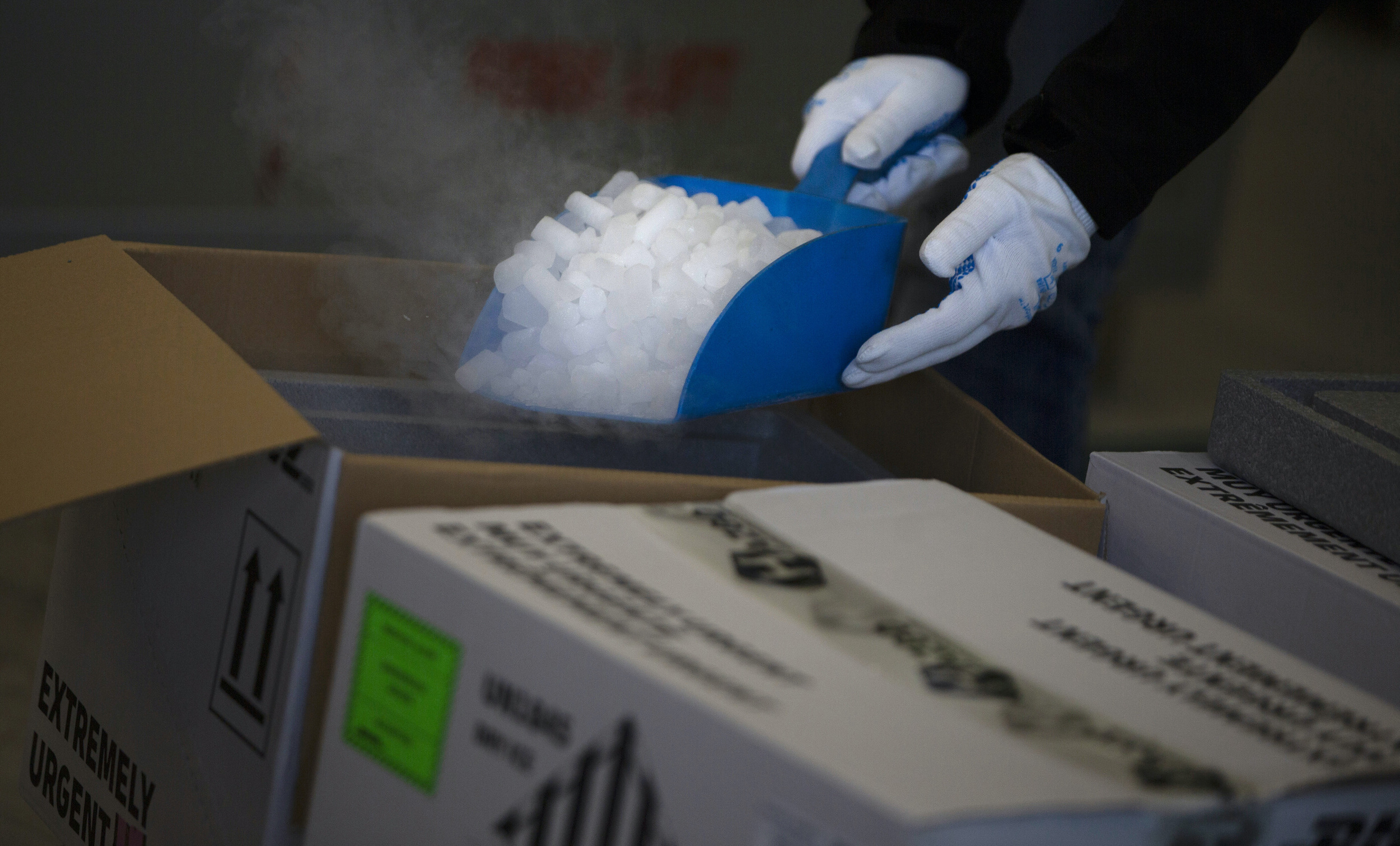
A hazardous goods worker shows how dry ice is used on specific vaccines and medicines to keep them cool during a demonstration of logistics and handling of vaccines and medicines at the DHL cargo warehouse in Steenokkerzeel, Belgium, Tuesday, Dec. 1, 2020. (AP Photo/Virginia Mayo)
The International Association of Fire Chiefs is warning emergency workers that they are likely to see an uptick in thermal burns and other injuries from people mishandling dry ice. I do not want to overplay the danger here, but this is just a micro-example of the zillions of things that people have to think about with hundreds of millions of vials of the COVID-19 vaccine flying around the country in the coming months.
The PPP recipient list
I mentioned last week that the Small Business Administration was releasing a more detailed list of businesses and charities that got Payroll Protection Program “loans.” Here is a search engine that lets you search by name, location, industry and amount. Here is an idea of the kind of stories that can flow from this data.
IKEA is ending its catalog
I don’t care about IKEA ending its print catalog but, apparently, some people do. Some are even emotional about it. At one time, IKEA produced 200 million copies of the catalog in 32 languages.
I suppose it is similar to how I felt, as a boy, about the Sears and Montgomery Ward Christmas catalogs. It was a couple of hundred pages of stuff we could not afford but I liked to look at anyway. The difference is that IKEA is stuff you like that you know in your heart you will never be able to assemble.
[the_ad id=”667878″]
Holiday greeting cards are in style again
An October survey by Enksy, an online crafts marketplace, found that 46 percent of respondents planned to send physical cards this season, with the number jumping to 62 percent for respondents who are avoiding in-person gatherings.
Card makers, like Hallmark and Paper Source, are reaping the benefits and reporting rising sales.
It is a pretty big turnaround for the greeting card industry, which has fallen on hard times in recent years.
Some card companies have produced COVID-19 themed cards this year, many of them pointing out that 2021 has to be better.
The times in which we live: A post from a family doctor in rural America
These are iPad stations being prepared for virtual ICU end of life visits by a palliative care doc I know. Jesus. pic.twitter.com/lIgbg0FhaL
— i cant drive, n95 (@roto_tudor) December 3, 2020
The way we work now: From a TV reporter in Kansas City
I suspect many of you could tell some version of this story yourselves.
Journalists, my hope is that, yes, you will solve individual problems. And more importantly, you will identify broken systems and hold them accountable.
We’ll be back tomorrow with a new edition of Covering COVID-19. Sign up here to get it delivered right to your inbox.

